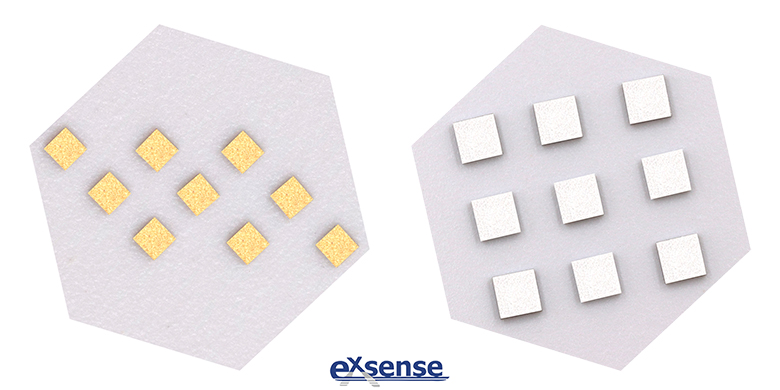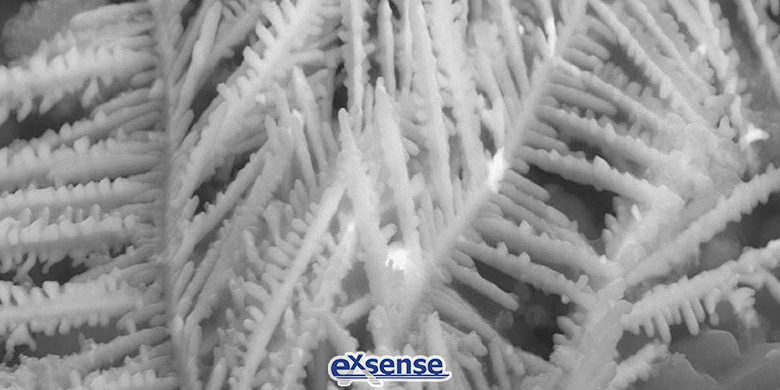
As one of the earliest sintered conductive slurry, conductive silver slurry has been used by most manufacturers as a functional conductive material for the production of silver electrode NTC thermistor chip due to its low curing temperature, high bonding strength, stable electrical properties and high cost performance. Compared with conductive carbon slurry, conductive copper slurry, its good conductive properties have attracted much attention and favor, and which are widely used in the electronics industry.
With the increasing popularity of sintered conductive silver slurry, the phenomenon of silver migration has also been introduced. Silver migration refers to the presence of DC voltage gradient in the wet environment, water molecules into the surface of silver-containing conductor electrolysis to form hydrogen ions and hydroxide ions. Under the action of electric field, silver ions migrate from high potential to low potential, and form flocculent or dendritic extension, forming black silver oxide on the boundary where high and low potentials are connected. Silver migration will reduce the reliability of NTC thermistor chip after it is put into use, leading to the following hazards:
First, the potential hidden trouble of equipment abnormal work
Ion migration of electronic materials is caused by electrochemical phenomena related to solution and potential, and is related to metal ion movement reaction and precipitation reactions from metal dissolution, diffusion and electrophoresis. Especially in the electronic equipment with high density assembly, the interaction of materials and surrounding environment leads to ion migration, resulting in the change of electrical characteristics and become the cause of failure.
Second, the insulation resistance deterioration
Silver ion migration is very harmful to the insulation performance of printed circuit board. By applying 250V DC voltage to the silver electrode on the phenolic paper laminated PCB and placing it at 40℃ and 90%RH for 24 hours, The Japanese scholar Tsunashima tested the deterioration of insulation resistance, and the results showed that the insulation resistance decreased over time.
Third, the potential causes of catastrophic events
With the development of silver migration process, the black-brown Ag2O grows towards the cathode side, and the Ag which is continuously restored at the cathode side grows from the cathode to the anode in turn. Ag2O growing from anode to cathode and Ag migrating from cathode to anode, the circuit can maintain a good stable state when they are not in contact.

However, the dendrites of dendritic Ag2O and restored Ag grow continuously. Once they contact each other, a transient local overcurrent (short-circuit current) will be generated at this point and fuse them, so the insulation resistance will return to the state before the occurrence of short-circuit. In this way, Ag restored growth and short circuit fusing repeated, which will lead to local carbonization of the corresponding insulation board surface, and make it in a continuous state of electrical short circuit, resulting in permanent damage or even burning up the base material.
In order to deal with the phenomenon of silver migration, EXSENSE Electronics Technology Co., Ltd. launched a new product – gold electrode NTC thermistor chip. Compared with silver electrode NTC thermistor chip, gold electrode NTC thermistor chip has the following characteristics:
1. High reliability: gold electrode is not easy to produce ion migration in wet working environment. In contrast, the silver electrode works in a wet environment for a long time will easy to cause a natural phenomenon of silver migration. (Corresponding to the above test)
2. High stability: The gold drift rate of the gold electrode NTC thermistor chip is low, and the dispersion of the resistance value can be kept within the specified range for a long operating time, which is suitable for the scenarios requiring long-term stable temperature monitoring.
3. Suitable for a variety of hybrid design multi-functional modules: infrared thermopile, IGBT module, thermal print head, integrated modules, semiconductor modules, power modules and so on.
4. a variety of packaging methods: blue taping, trap packaging, bulk packaging, etc..
